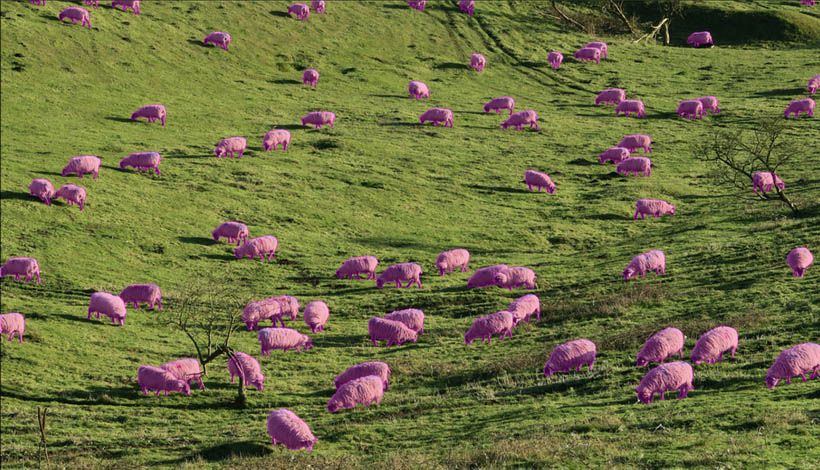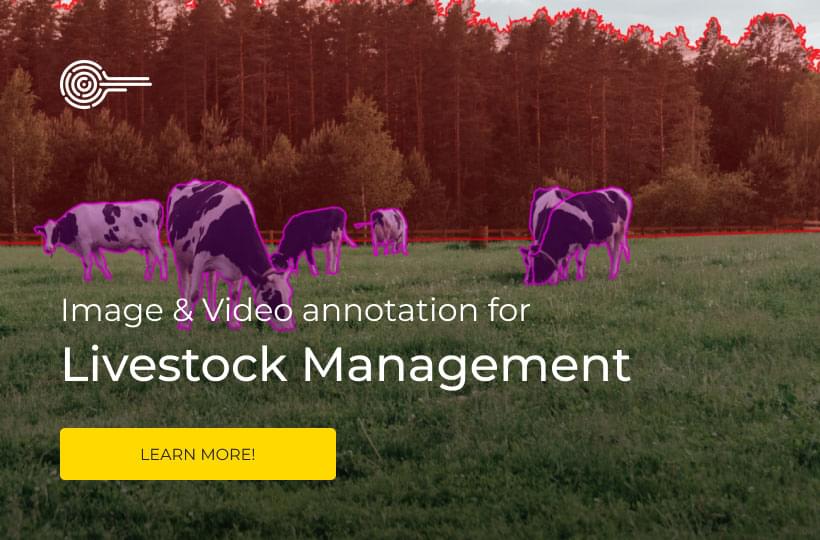Transforming Livestock Management with Quality Data Annotation

Smart livestock farming has the potential to meet the challenges of food production in the twenty-first century. Computer vision based AI monitoring systems have the capacity to support farmers and improve animal welfare, whilst promoting efficiency and productivity. Livestock management is being transformed by machine learning models that can manage herds and provide producers with early warning of potential welfare concerns.
Image and video annotation are proving to be important factors in the progression of livestock management AI systems. In order for the emerging technology to achieve its stated aims it is essential for developers to have access to the requisite quantities of appropriate data.
Annotation providers, like Keymakr, are stepping in to meet this need by promising high quality datasets that meet the demanding specifications of the industry. This blog will focus on the exciting use cases of livestock management AI technology and show how specific annotation techniques can help these applications come to fruition.
Data annotation for livestock | Keymakr
The potential of livestock management AI
Smart farming computer vision models are capable of monitoring livestock and relaying important information to farmers. Specific applications include:
- Drones can be used to automatically count the amount of animals in a particular field or area. This can alert farmers to missing animals over a large area.
- AI powered cameras are being trained to monitor health and detect illness in herd populations. Early intervention can save animals and reduce the spread of dangerous livestock pathogens.
- Herd monitoring also extends to tracking feeding rates to ensure that all animals are receiving the food they need to develop.

Annotation techniques support livestock management
The use cases detailed above are enabled by access to quality image and video training data. There are a number of annotation techniques that are particularly applicable to livestock management models:
- Semantic segmentation: This technique divides images, pixel-by-pixel, in different object classes. In the case of livestock imagery this would mean that every pixel representing a cow, for example, would be defined by the same colour. The field itself, the sky, and any other object type would receive the same treatment. Painstaking annotation of this type allows models to interpret complex environments.
- Instance segmentation: This method of annotation adds further detail semantic segmentation by identifying each instance of a particular object class. In practice this means labeling with a distinct colour each individual cow in an livestock image. This level of detail is a demanding labeling challenge, particularly when multiplied across multiple frames in video data.
- Polygon annotation: Livestock management systems are required to recognise the complex shapes of different animals. To achieve this polygon annotation techniques are used to trace the outlines of animals in a large variety of positions and contexts.
- Skeletal annotations: In order to identify unusual behaviour or signs of sickness in livestock, AI models must be able to analyse movement effectively. Video data is used as training for this purpose. Annotators use lines to mark limbs and points of articulation across each frame of videos featuring animals moving. This data allows models to recognise normal and abnormal movement.

Data annotation services provide an edge
Creating quality annotation livestock management AI training datasets requires the efficient deployment of the above annotation techniques. The workload and management burden of this time consuming task can be prohibitive for tech companies large and small. Professional annotation services can help alleviate the pressure of data creation and labeling by leveraging their experience and management expertise.
Keymakr utilises proprietary technology, in-house teams of annotators, and multiple layers of quality control to provide data annotation that is precise, affordable and scalable.



